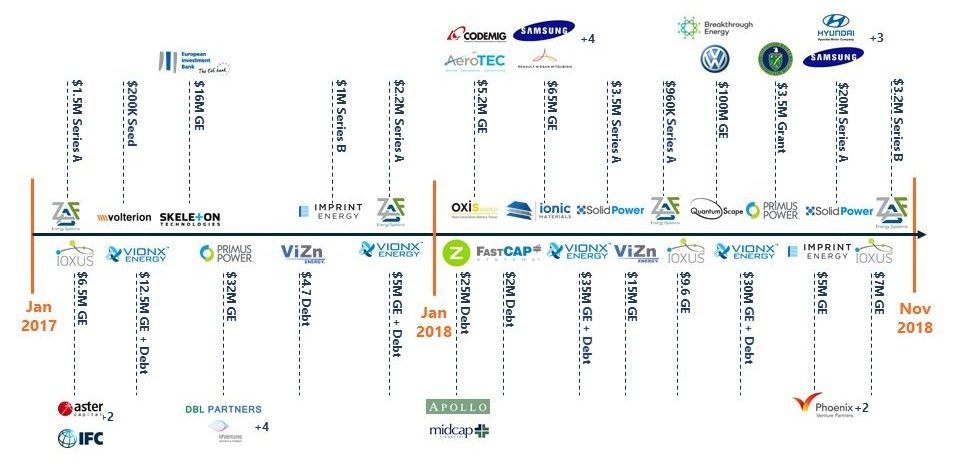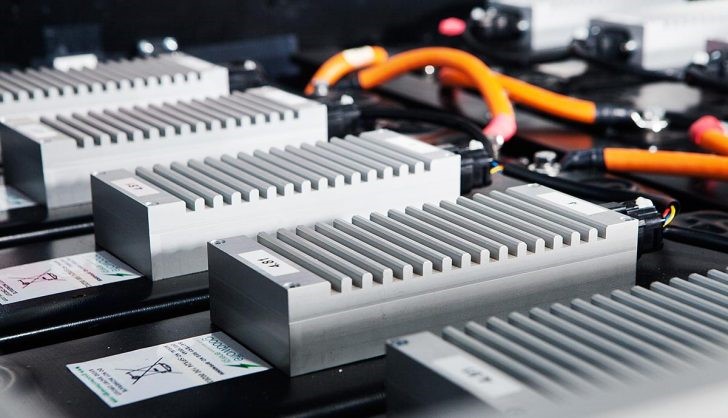
Battery Technology Show Recap: Emerging Battery Technology
Contributions from: Pirmin Ulmann, CEO at b-science.net
Last month, I was fortunate enough moderate a session at the Battery Technology Show in London. Here are takeaways from that session as well as some additional insight from our own research.
Delegates from across the battery industrial supply chain participated in discussions around the technologies and business model innovations that could disrupt their markets in the next few years. Speakers included topic experts like Billy Wu, a senior lecturer at the Dyson School of Engineering at Imperial Collage, and Pirmin Ulmannm, co-founder and CEO of b-science, an energy storage patent search and monitoring company.
Coming away from the event, I had the feeling that industry consensus is that the liquid electrolytes battery market share will rapidly drop due to the advent of a newer battery. The difference in views was the timing to commercial availability.
Liquid lithium-ion performance has iteratively increased since its commercial introduction in 1991. Only in recent few years have major technological advancements, driven by large R&D funding, reached a tipping point of alternative battery chemistries. Venture capital has taken notice and increased investment activity over the past 24 months in solid-state, ultracapacitors and redox flow batteries, as well as a resurgence of investment into chemistries including zinc, sulfur and lead (shown in Figure 1).
The panelists also provided insight into where some of these technologies stand today.

Solid-state batteries
As the name implies, solid-state batteries utilize a solid material to enable transport of lithium-ions in a battery. Solid-state batteries previously fell short of expectations due to lack of a suitable candidate materials for the electrolyte. Recent incremental gains at lab level has led to various successful pilot projects in recent years. The panelists explained that while Li-ion batteries with liquid electrolytes are the standard today, a solid electrolyte is non-volatile, making solid-state batteries inherently safer. They also have much higher energy density.

Dyson, one of the early movers, acquired solid-state battery developer Sakti3 for $90 million a few years ago, which will be used in their electric car due for release in 2020. In February 2018, automotive OEMs including Renault, Nissan, Mitsubishi (and Dyson) collectively invested $65 million in solid-state battery startup Ionic Materials. Solid Power also raised $20 million in preparation for a 2019 production facility, and has prepared for maintainable growth with a set of strategic partners. QuantumScape received $100 million from Volkswagen in June, which took the company to early “unicorn” status, despite not having evidence of a commercialized product.
The panel summarized that solid-state batteries maybe be over-hyped, and they will watch for under-performing technological gains, creating opportunities for alternative approaches to solid-state batteries even after wide scale deployment.
Current trends for long long-duration storage
Supercapacitors, otherwise known as ultracapacitors, were one of the promising technologies discussed. They offer much higher cycling stability (millions of cycles), compared Li-ion batteries at the expense of lower energy density. One discussion centered on the possible integration of both supercapacitors and solid-state batteries. In a combined solid-state battery/supercapacitor system, weaknesses in longevity and peak power performance of the solid-state battery can be compensated by the supercapacitor.
Graphene derivatives and carbon nanotubes can improve the performance of supercapacitors and are increasingly being used at production scale. Early market player Skeleton Technologies is a manufacturer of graphene ultracapacitors, ramping up production to bring graphene ultracapacitors from high-end sectors to the mass market, while moving higher up the value chain with turnkey energy storage solutions.
Sulfur in Li-ion batteries
Lithium-sulfur was discussed as a promising battery technology with recent substantial R&D activity by key industry players. Because of its high energy density and availability, sulfur could potentially replace cobalt, nickel and manganese for use in the cathode.
Previously, the weakness of lithium-sulfur batteries was related to cycle stability. These issues have been overcome with the help of novel materials, leading to commercialization within niche markets such as in satellites that require high energy density on a mass basis. As a result, several players who have been around for a while are seeing a resurgence in market growth. Oxis Energy for example, received its first portion of equity funding this 2018 for the first time in 6 years.
Commercialization timing
Hopes for commercialization in under 5 years in many cases seems over optimistic. But with an increasing trend of substantial late-stage rounds appearing within the sectors we cover over the last few years, it wouldn’t be surprising to see a few more major investments cropping up within the emerging battery technology space in the next 12 months to help with the commercialization valley of death.















